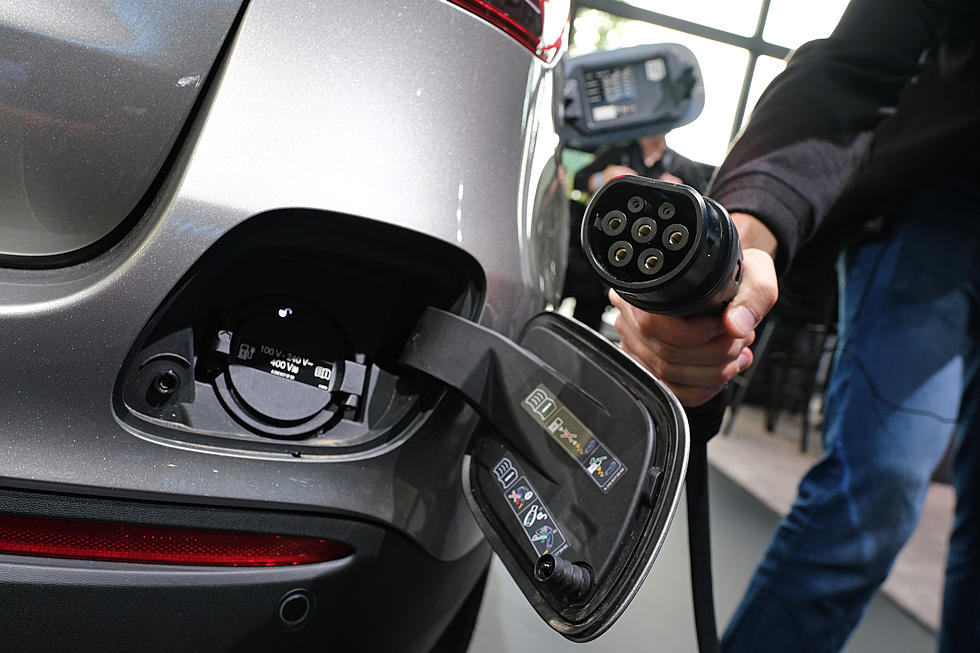
Indiana Takes Next Step Toward Charging Stations for Electric Vehicles
Slowly but surely, auto manufacturers are beginning to shift their focus to producing all-electric vehicles as more and more consumers (i.e. you and me) are looking to break themselves from their dependence on fossil fuels for one reason or another (cost, impact on the environment, etc.). The trend began nearly 25 years ago when the Toyota Prius became the first mass-produced hybrid vehicle on the market. While not fully electric, the compact car became popular among consumers for what was at the time, and still is today, its insanely good gas mileage of 40 to 50 miles per gallon (my mom and stepdad each have one and love them). While hybrid vehicles are still a popular option for new car buyers, all-electric vehicles are seeing an increase in demand thanks to the fact they don't require a single drop of gasoline. No doubt an enticing thought when gas prices are at an all-time high. The biggest hurdle facing electric vehicles right now is where to charge them when the battery gets low. While charging stations are becoming more prevalent in larger cities, the options for those of us who don't live in those cities are few and far between if they even exist at all. However, that may soon change here in Indiana as the Department of Transportation is taking the next step to make more charging stations available statewide.
Indiana Electric Vehicle Charging Infrastructure Deployment Plan
Personally, I would have no problem purchasing an electric vehicle. With the current price of gas, it costs me around $90 to fill up the tank of my Ford F150. One of the biggest reasons I'm hesitant to pull the trigger, outside of the price (the base model for the new all-electric F150 starts at just over $39,000), is where would I go to charge it if I needed to when I'm on the road? I realize installing an at-home charger would be required so I could charge it at night when I'm not using it, but I know myself well enough to know there will be days when I forget. What would I do if I were driving to work or making a trip to Indianapolis from Evansville and a warning light pops up on my dashboard saying I have 5% battery left? Make sure I have a generator with me at all times? Or, sit on the side of the road until someone can bring me one? It's not like I could just pull into a gas station and recharge as I can now when my truck tells me I have 50 miles until my tank is empty.

But, that concern is getting a little closer to becoming a thing of the past as the Indiana Department of Transportation (INDOT) has, "issued a request for information (RFI) to inform development of the state’s electric vehicle (EV) implementation plan." This follows the announcement last year that Indiana will be receiving $100 million dollars in funding from the National Electric Vehicle Infrastructure program that was part of President Biden's Bipartisan Infrastructure Law.
What is a Request for Information (RFI)?
According to INDOT, the purpose of the RFI is,
...to solicit feedback and recommendations for the planning, coordination, and development of electric vehicle charging networks within the State of Indiana...As such, the purpose of the RFI is to collect inputs from potential market participants across varying sectors to obtain information on how INDOT can best support the deployment for EV charging programs in line with its goal of providing safe, efficient, and high-quality transport infrastructure for the State. This RFI is for information collection, and respondents should note that ultimately NEVI program requirements will dictate decision-making for federal funding placement.
In simpler terms, as part of the requirement for receiving the federal funds, INDOT must get input from the public to formulate the plan they will present to the federal government on how the funds will be used. Questions can be submitted by e-mail to evchargingRFI@indot.in.gov and must be submitted by 5:00 PM Eastern / 4:00 PM Central on Monday, April 11th. All questions and answers will be posted to the INDOT website by 5:00 PM Eastern / 4:00 PM Central on Friday, April 15th.
INDOT will then use the feedback to develop their State Electric Vehicle Implementation Plan which they must have turned in by August 1st.
Once that is approved, they can begin the process of accepting plans from contractors to begin building the infrastructure required to support the charging stations.
How Soon Will Indiana Get Electric Vehicle Charging Stations?
When the day comes that we finally have charging stations available, they'll be on what are called, "alternative fuel corridors" (AFCs) that have been designated by the federal government. In Indiana, our AFCs will be our interstate highways. How soon that will happen is unknown. By the time the plan is filed, approved, and the construction process is complete, I'm guessing we could be looking at a couple of years or more. With that said, the fact the ball is officially rolling to make that happen is certainly a step in the right direction.
[Source: INDOT]
LOOK: See how much gasoline cost the year you started driving
LOOK: Route 66’s quirkiest and most wonderful attractions state by state
More From WOMI-AM



![Three Important Life Lessons I Learned As A Student Athlete In Kentucky [PHOTOS]](http://townsquare.media/site/76/files/2022/04/attachment-Untitled-design-26.jpg?w=980&q=75)
![Kentucky Mountaintop Cabin Is Perfect If You Need Some Time Away [PHOTOS]](http://townsquare.media/site/76/files/2022/04/attachment-1.jpg?w=980&q=75)




